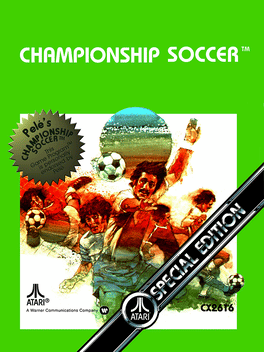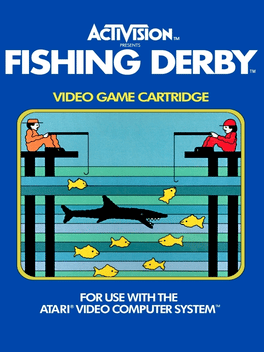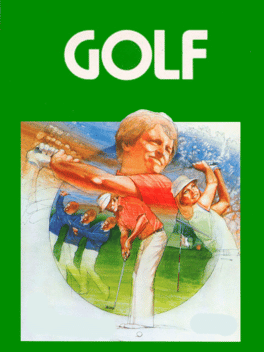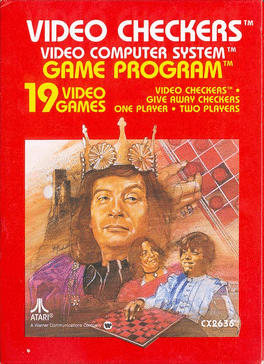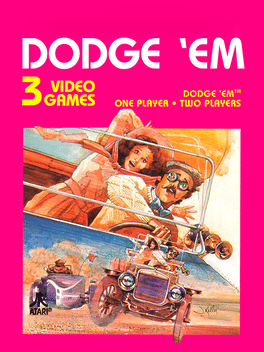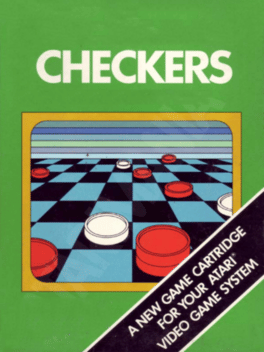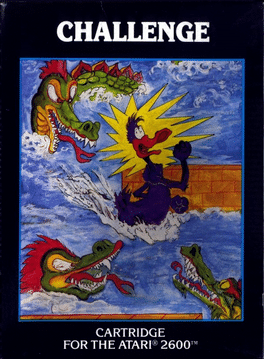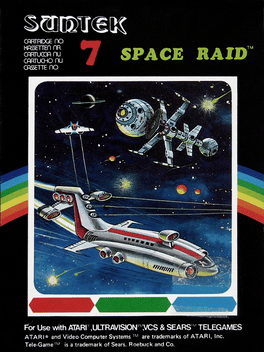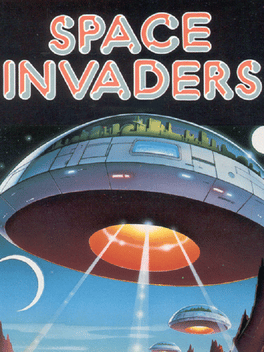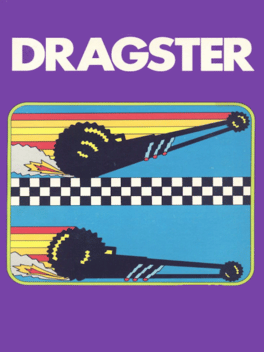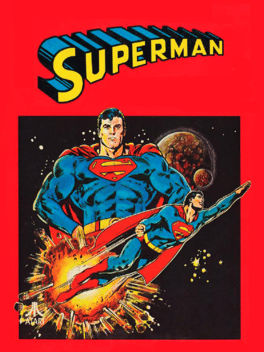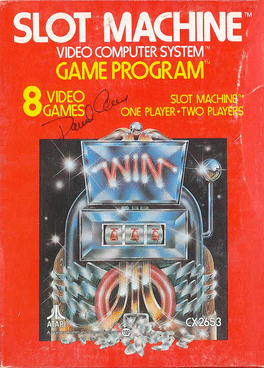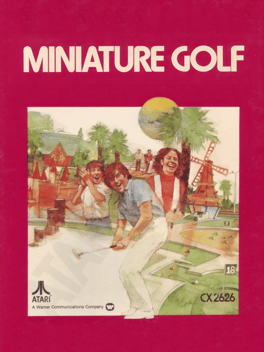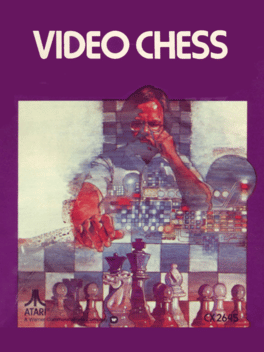New Atari 2600 Games - Page 28
-
Championship Soccer
1980
Championship Soccer
1980
Championship Soccer is a soccer game where each team has one forward, two backs and a goalie. The forward and backs always run in formation. You only control the goalie when he has the ball, otherwise he is computer controlled. -
Video Pinball
1980
Video Pinball
1980
star 4.2Video Pinball is a loose simulation of an arcade pinball machine: ball launcher, flippers, bumpers, and spinners. -
Pelé's Soccer
1980
Pelé's Soccer
1980
Pelé's Soccer is an Atari 2600 game based on the famous footballer Pelé, and published in 1980. It features basic graphics, realistic (for that time) ball-handing and goal-keeping techniques using the Atari joystick. -
Fishing Derby
1980
Fishing Derby
1980
star 6.9In Fishing Derby, two fishermen sit on opposite docks over a lake filled with fish (and a shark that passes through). Using the joystick the player is able to move his line left right and up and down in the water. When a fish is hooked, the line slowly comes up to the surface of the water. Pressing the fire button on the joystick reels in the fish faster. However, if both fishermen have fish hooked, only one person can reel theirs in (the one who hooked theirs first). The shark that roams the water will try to eat hooked fish before they surface. The objective for both fishermen is to reach 99 pounds of fish first. There are six rows of fish; the top two rows have 2 lb. fish, the middle two rows have 4 lb. fish, and the two bottom rows have 6 lb. fish. The more valuable fish sit at the bottom, but they are harder to bring in as they run a higher risk of being eaten by the shark. The game's two variants are simply single player and multi-player. In both games the objective is to reach 99 lb. of fish first. -
Golf
1980
Golf
1980
star 4.3This game features a simplified type of golf. The area of the hole is rendered in light green, all areas outside the hole are rendered in a medium blue. On the larger holes the green is rendered as a dark green hole circle with the hole near the center. There are several obstacles that can appear, including trees, sand traps, and water features. On difficulty A, balls that go out of bounds stay there and must be hit back in; on difficulty B, the balls stick to the edge of the area. Balls hit near the water can soar over it, or if they land into the water, the ball is placed back where the shot was taken. Balls hit into sand traps will stick to the sides of the traps, and it takes a more powerful swing to free the ball. The player only uses one club - the amount of time the fire button is held down determines how much power the ball will be hit with, and how far it will go. The player's golfer can be moved anywhere on the field, with his golf club always facing the ball. On the larger hole the goal is to hit the bal -
Video Checkers
1980
-
Dodge 'Em
1980
Dodge 'Em
1980
star 5Dodge 'Em is a 1980 Atari 2600 video game, a driving game based on Sega's Head On (1979). The player controls one car and has to drive counter-clockwise, avoiding computer-controlled cars whose sole aim is to produce a head-on collision. The player's car can travel at two speeds, a 'normal' speed which is the same speed as computer-controlled cars, or if the player presses the controller button, his or her car travels at a 'fast' speed double its normal speed. The computer-controlled cars have only one speed. Players change lanes by pushing the controller in the appropriate direction when their car is near one of the gaps in the roadway. -
Checkers
1980
Checkers
1980
Everybody knows how to play Checkers, right? You're in for a surprise. Checkers is no longer just a one-on-one game. Now, the whole family can gang up and play against the Activision computer at three levels of challenge. Before you start playing, read these instructions carefully to review the basic rules and learn how to pick up and move your checkers. -
Challenge
1980
Challenge
1980
Challenge is an Action game, developed and published by Funvision, which was released in Europe in 1980. -
Adventure
1980
Adventure
1980
star 7.6Adventure is a video game for the Atari 2600 video game console, released in 1980. In the game, the player controls a square avatar whose quest is to hunt an open world environment for a magical chalice, returning it to the golden castle. The game world is populated by roaming enemies: dragons, which can eat the avatar; and a bat, which randomly steals and hides items around the game world. Adventure was designed and programmed by Atari employee Warren Robinett, and published by Atari, Inc. At the time, Atari programmers were generally given full control on the creative direction and development cycle for their games, and this required them to plan for their next game as they neared completion of their current one to stay productive. Robinett submitted the source code for Adventure to Atari management in June 1979 and soon left Atari. Atari released the game in early 1980. -
Space Raid
1980
-
Space Invaders
1980
Space Invaders
1980
Space Invaders is a game in which the player controls a laser cannon by moving it horizontally across the bottom of the screen and firing at descending aliens. The aim is to defeat five rows of eleven aliens—some versions feature different numbers—that move horizontally back and forth across the screen as they advance towards the bottom of the screen. The player defeats an alien, and earns points, by shooting it with the laser cannon. As more aliens are defeated, the aliens' movement and the game's music both speed up. -
Dragster
1980
Dragster
1980
star 4.1You have in your hand one of the most exciting video games ever designed. One word of caution: this game takes a little time to learn because it's so challenging. It's very tricky. So, please read these directions and give yourself some practice time. Then you can aim for the World Record. Game 1: Straight-ahead Dragster, one or two players. Game 2: Steerable Dragster, one or two players. Your Joystick Controller is both the clutch and gear shift for your Dragster; the red button is your gas pedal. Use left Joystick for the top car; right one for bottom car. Hold Joystick with button at the upper left. To shift gears, clutch by pushing Joystick to the left and shift by letting the Joystick spring back to the center. Your car starts each race in neutral (N). There are four gear positions--1, 2, 3, 4--and you must clutch and shift between each gear. You cannot downshift. When the countdown reaches 0, you can start. If you drop into gear too soon, before the end of the countdown, EARLY will appear on the screen a -
Basic Programming
1979
Basic Programming
1979
Basic Programming attempted to teach simple computer programming on the Atari 2600. It was released in 1979, and it was one of only a few non-gaming cartridges ever designed for the 2600. The programming language was superficially similar to dialects of BASIC, but differed in many important aspects. The extremely small RAM size of the Atari 2600, 128 bytes, severely restricted the possibilities of this cartridge for writing programs. -
Superman
1979
Superman
1979
star 3Superman is an action adventure game for the Atari 2600. It was one of the first single-player games for the system and one of the earliest licensed video games. Superman is one of the first to utilize multiple screens as playing areas. -
Slot Machine
1979
-
Miniature Golf
1979
Miniature Golf
1979
star 4This is a computer game simulation of a miniature golf course. It attempts to refine your sense of timing and your perceptiveness in judging distance. As in a traditional miniature golf course, a variety of obstacles are placed in your path to the cup. Depending on the game that is selected, the course can be played solo, or a two player competition can be initiated. -
Bowling
1979
Bowling
1979
star 5.3The game is based on the game of bowling, playable by one player or two players alternating. In all six variations, games last for 10 frames, or turns. At the start of each frame, the current player is given two chances to roll a bowling ball down an alley in an attempt to knock down as many of the ten bowling pins as possible. The bowler (on the left side of the screen) may move up and down his end of the alley to aim before releasing the ball. In four of the game's six variations, the ball can be steered before it hits the pins. Knocking down every pin on the first shot is a strike, while knocking every pin down in both shots is a spare. The player's score is determined by the number of pins knocked down in all 10 frames, as well as the number of strikes and spares acquired. -
Video Chess
1979
Video Chess
1979
Video Chess is a video game released by Atari in 1979 for the Atari 2600, based on the rules of chess. -
Backgammon
1979
